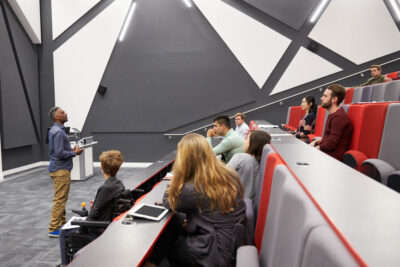- All Blog Categories
- Adult Education Blog
- Advancement Blog
- Community College Blog
- Data & Analytics Blog
- Enrollment Blog
- Higher Education Strategy Blog
- K-12 District Leadership Blog
- Student Success Blog
Our Blogs
Get the latest insights from EAB experts on a variety of topics and terrains from enrollment to student success to K-12 education to higher education strategy and beyond.

The real demographic crisis isn't national—it's regional

What are students asking university chatbots?

What higher ed can learn from these successful academic program revitalizations

Preparing for the end of Grad PLUS: 4 strategies to rethink graduate cost and aid
EAB Blogs by the Numbers
100+
Blogs authored last year8
Different blogs that span topics in education53
Contributing expertsRecent and Featured Posts from Every Blog
-
Student Success Blog
Three lessons from 1,200 student success leaders on higher ed’s future
CONNECTED25 revealed how 1,200 leaders are navigating higher ed’s upheaval through AI, accountability, and a renewed focus on human-centered student success.
Blog -
Adult Education Blog
Here’s how AI is amplifying stealth search behavior.
AI and digital-first search are reshaping student behavior. Learn how to make your .edu visible, improve content, and turn your website into an enrollment engine.
Blog -
Adult Education Blog
We secret shopped 40 graduate programs’ lead nurturing campaigns. Here’s what we learned.
A well-executed lead nurture campaign can be the deciding factor in the hard-fought race to become one of the 2 (2.24 to be exact) programs your lead applies to. I gave the group of 10 schools a grade across five key characteristics of effective lead nurture strategy. Here’s where they landed.
Blog -
Adult Education Blog
The higher ed SEO checklist
To help your institution get ahead of these changes, use this a practical checklist of AI-proof SEO strategies.
Blog -
Higher Education Strategy Blog
Fixing What’s Broken in Interdisciplinary Program Design
Discover how colleges can build scalable, market-aligned interdisciplinary programs that drive innovation and relevance across departments.
Blog -
Adult Education Blog
Are you recalibrating your graduate and adult recruitment strategy?
Dive into four adjustments enrollment leaders are making to build stronger, more sustainable pipelines in this unstable environment.
Blog -
Advancement Blog
In an unpredictable year for higher ed, stability starts with advancement
It feels like every week brings a new headline that reshapes the higher education landscape, creating a highly unpredictable fundraising environment. How do you keep moving when the landscape keeps changing? Here are three strategies advancement leaders can enact right now to steady their teams and sustain momentum.
Blog -
Higher Education Strategy Blog
What higher ed can learn from these successful academic program revitalizations
Three schools demonstrate how to successfully revamp academic programs—and which strategies can be used to strengthen your own portfolio.
Blog -
Adult Education Blog
Are you losing grad and adult enrollments at the last minute? Try these 4 strategies.
Developing an effective yield strategy is just as important at the graduate level, if not more so. Many prospective adult students are not only considering different program options, but also weighing going back to school against other priorities such as work and family—meaning their enrollment decisions are constantly in flux.
Blog
Great to see you today! What can I do for you?